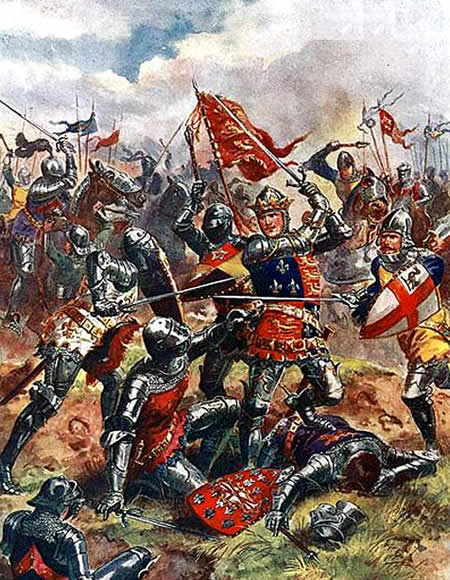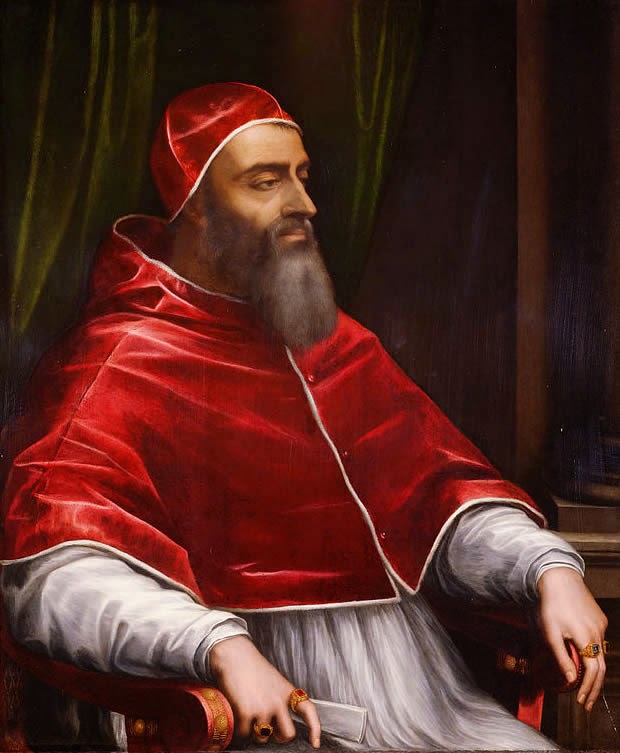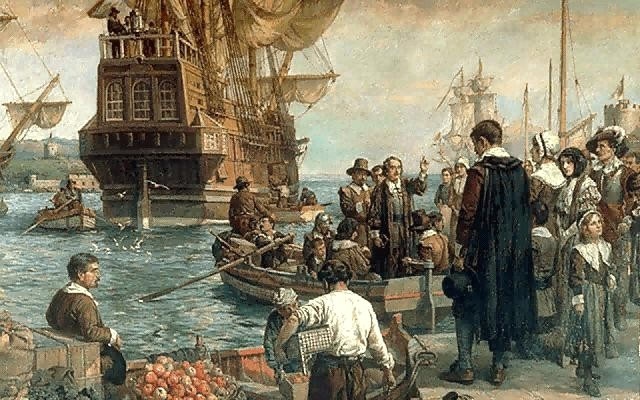 |
| Hundred Years’ War |
In battles fought from 1337 to 1453 primarily by England and France for control of France and the French Crown, England initially had the upper hand, but in 1429 the French, inspired by Joan of Arc, regained all areas of France that they had lost except for Calais. England and France had been at war several times before the Hundred Years’ War because of the landholdings of the English Crown in France.
Through several wars, the French had slowly been regaining control of these lands. With the beginning of the Hundred Years’ War the French found themselves losing ground against the English. Militarily the English longbow proved especially devastating to the French and led to the English victories at Crécy and Agincourt.
The English believed that they were secure in their victory but found the tables turned on them in 1429 by Joan of Arc. The French were able to retake much of the land the English had captured up to that point in the war. The Burgundians switched sides, joining the French, and the English found themselves pushed back even more.
The English would continue to send armies to France and were, at times, able to retake lost territory; the war had definitely turned against them. The akibat years of the war saw the English lose all their territory in France except Calais. With France’s control over all the previously controlled English lands in France, the war ended in 1453.
Early English Lands in France
The English and the French had been at odds over the relationship of their kings to each other because of the English Crown’s control over lands in France. In England the English king was sovereign, yet in France he was a vassal of the French king and accountable to the French king.
This accountability was used, usually on trumped up charges, by the French kings to try to take land away from the English. The French did this in 1202 and when the English king did not show up at the French court to answer charges brought against him, the French king declared his lands to be confiscated and war followed.
During the war (which lasted until 1204), the French conquered Normandy, Maine, and Anjou from the English. With the signing of the Treaty of Paris in 1259 the English had been reduced to control of just Aquitaine. The English king also reconfirmed his status as a vassal of the French king with respect to his lands in France.
 |
| English army in hundred years' war |
The French trumped up charges again in 1294 against Edward I and again declared his lands confiscated and launched an invasion of those lands. The war lasted until 1298. This war also saw the Scots allied with the French against the English in 1295. A new peace treaty, the Treaty of Paris, was signed, returning the lands lost by the English during the war to them.
Isabella, the daughter of the French king Philip IV, was married to the English heir, Edward II. At the time this seemed to be a way to create lasting peace between the two kingdoms but ended up causing more problems by later giving the English king a claim to the French throne during the Hundred Years’ War.
In 1324 the French again provoked the English and summoned the English king to the French court. When the king did not show up, the French again declared the province of Aquitaine confiscated from the English and the two countries went to war again.
The war did not last long and in 1325 Edward II’s son, Edward III, and his mother went to France so Edward III could pay homage to the French king, Charles IV. Returning to England in 1327, Queen Isabella had Edward II deposed and Edward III, only 14 years old, crowned king.
With such a young king, the English ended up agreeing to a peace treaty that favored the French, allowing them to keep the land they had conquered. In 1328 the English were forced to make peace with the Scots and Charles IV, third son of Philip IV, died. None of Philip’s three sons had a male heir. Succession ended up going to the cousin of Charles IV, Philip of Valois.
While neither Edward nor his mother made any claim to the French throne at this time, Edward had himself crowned king of France in 1340. In French law, Edward had no claim to the Crown since French law did not recognize any claim by a female, or her offspring, to the throne of France.
The early years of Edward’s reign saw him pay homage to the French king, since he could not afford a war with France. Focusing on Scotland with the death of the Scottish king, Robert I, Edward was able to gain the upper hand there and bring Scotland back under England’s control.
However, being an ally of the Scots, Philip had an interest in what was happening there and tried to link negotiations for continued peace between France and England with the war in Scotland. In 1336 France had put together a fleet that was to take a French crusade to the Holy Land.
However, Pope Benedict XII canceled the crusade because of the problems of the French, English, and Scots. Instead it seemed to the English that the fleet would be used to invade England. While there was no invasion of England, the fleet did conduct raids on parts of the English coast and convinced the English that war with the French was coming.
Using the same ploy they had before, the French king summoned the English king, as the duke of Aquitaine, to turn over the French king’s brother, who had taken refuge in England. In 1337 when Edward did not comply with Philip’s order, Philip declared Edward’s land confiscated again and the Hundred Years’ War began.
Beginnings of the Hundred Years’ War
The war began with the French invading Aquitaine in 1337. The French fleet continued raiding the English coast. The English were finally able to defeat the French fleet at Sluys in 1340, which gave the English control of the English Channel, making it easier for them to move troops to France.
During this time Edward made alliances with the Low Countries and the German emperor and arranged to have his soldiers join theirs for a campaign against the French. However the date for the campaign kept being delayed until 1340.
The Flemish joined with Edward, who had himself crowned king of France on January 26, 1340. While the English laid siege to the town of Tournai, the French moved against the allied army but did not engage it. The war shifted to Brittany in 1341 with the death of the French duke.
Succession to the title was disputed and the English took the chance to support the side the French king opposed. Neither side was able to gain the upper hand and control of the entire province. The fighting continued for several years to come. In 1343 a truce was called, lasting until 1346.
Edward decided to conduct the campaign in 1346 with an English army and not rely on his allies for soldiers. Edward’s army landed in Normandy hoping to draw the French army away from Aquitaine, which it did. Marching first to the Seine River and then along it toward Paris, the English army raided the countryside and towns as it marched.
The French had destroyed most of the bridges across the Seine River and had a chance to trap the English army but instead allowed the English to cross the river and march away. The French would have the same chance again when the English army reached the Somme River and again the French allowed the English to cross the river and escape. Edward finally stopped retreating and chose the area around Crécy to give battle to the French on August 26, 1346.
Edward picked an easily defended spot that forced the French to attack him uphill. He also deployed his archers to have a clear field of fire against the advancing French. The French arrived on the battlefield late in the day, yet chose to attack instead of waiting until the next day.
The French also did not attempt to organize a massed attack against the English; instead, they attacked as they arrived on the battlefield, thus leading to approximately 15 independent assaults on the English position.
The English archers cut down each assault with few of the French knights actually reaching the English men at arms. French casualties were estimated at over 1,500 knights and nobles and up to 20,000 infantry and crossbowmen. English casualties were about 200 men.
With his victory, Edward moved against Calais, which he laid siege to in September 1346 and captured in August 1347. The next several years would see only minor fighting, and even a truce for a short time. Philip VI died in August 1350 and John II became the new French king. Under the new king, the French and English engaged in peace negotiations, but these were broken off in 1355 by the French.
Treatis and Raids
The English responded to the break in negotiations by launching raids into France. The most successful raid was in 1356, led by Edward’s son, Edward the Black Prince (so named because he wore black armor). Launching from Bordeaux, he marched his army toward the Loire River but turned back before crossing the river.
As he moved back to Bordeaux, he was blocked by a French army led by King John at Poitiers. On September 19, using the terrain to his advantage, the Black Prince was able to defeat the French using the terrain and his archers to cut down the attacking French. More important was the capture of the French king by the English.
With his capture, the French found themselves in a civil war between the dauphin and Charles of Navarre over who should control France. In 1359 Edward brought an army to France in an attempt to capture Reims. When he was unable to capture the city, he considered marching on several other cities, including Paris, but in the end decided to return to England.
The English and French signed a treaty on May 8, 1360, that released King John from English captivity and recognized English sovereignty over Calais, Ponthieu, Poitoum, and Aquitaine. Also part of the treaty was a clause where Edward agreed to stop calling himself the king of France. It looked as if the English had won the war. Even with the peace treaty in place, the French and English continued fighting on a low level.
This included the French civil war, which did not end until May 1364 with the defeat of Charles of Navarre. The French and English also found themselves on opposite sides of the fighting in Castile where the English, under the command of the Black Prince, prevailed. Unfortunately the fighting forced the Black Prince to raise taxes in Aquitaine.
The people of Aquitaine then appealed to the French king, Charles V (who had become king in 1364 when his father, John, had died). Therefore in November 1368 Charles V declared the English land confiscated again. Edward tried to negotiate a settlement with Charles, but when that failed Edward again declared himself king of France and the two countries were at war with each other again.
The French made significant gains in recovering territory they had given up in 1360. They were even able to launch raids on the English coast, whose defenses had been neglected after the peace treaty in 1360. This raised concerns that the French might actually invade England. In response, the English launched raids on cities they thought the French might use to stage their invasion.
By the end of 1369 English actions had eliminated the possibility of a French invasion. Over the next several years the English would continue to launch raids into the French-controlled territory, but they also lost territory to the French. Both sides continued to raid each other’s territory and avoid a set piece battle.
In 1376 Edward the Black Prince died; in the following year, 1377, Edward III also died. This left the Black Prince’s son, 10-year-old Richard II, as king of En gland. Small scale fighting continued through the 1380s until both sides agreed upon a truce in June 1389. The truce would last, with the usual intermittent raiding, until 1415.
Henry V and Charles VI
Starting in the early 1400s the French gave support to Scotland and Wales in their struggle against the English. They also launched several raids against English ports. However the French king, Charles VI, who came to power in 1380, suffered from insanity. Because of this, he was unable to keep his nobles controlled and in 1407, a civil war broke out between the Orléanists and Burgundians.
Both sides asked the English for aid. In 1413 Henry V was crowned king of England. While his father, Henry IV, had provided some support to the Burgundians, Henry V determined to take full advantage of the chaos in France. Thus in 1415 an English army of 12,000 men invaded France.
Landing in Normandy, Henry first laid siege to the town of Harfleur, which took over a month to capture. Henry lost about half his men during the siege. Henry then decided to march over land to Calais. Henry left his siege equipment behind so he could move fast. The French set out in pursuit of Henry with an army of 30,000 men.
Although Henry was moving fast, even in the rain, he had trouble finding a crossing to get across the Somme River, which allowed the French to get ahead of him. They chose the area near the castle of Agincourt to try to stop Henry. While the sides tried to negotiate a settlement, neither side was interested in budging from its position.
On October 25, 1415, the two sides fought the Battle of Agincourt. The French commander had originally wanted to fight a defensive battle since the English were short on supplies, but the French nobles convinced him to attack since they had a numerical superiority.
 |
| Battle of Agincourt |
The English took up a position with forests on either side of them. They had about 5,000 archers and only 800 men at arms. The archers placed sharpened stakes in the ground in front of them as protection from the mounted French knights. The ground between the two armies was wet and freshly plowed, which made it hard to move across.
The French nobles were unwilling to wait for the English to attack and eventually convinced the French commander to order an attack. With the wet, plowed ground slowing them down, the French took terrible losses from the English archers. Approximately a third of the French troops were in the initial attack and most were either killed or captured.
The next two attacks by the French were also thrown back by the English, although they did not meet the same fate as the first attack since they withdrew before being destroyed. Exact French losses are not known for sure, but estimates put their losses at 6,000–8,000 men. There is also no exact record of English losses, but they were few compared to the French.
Henry’s next campaign started in 1417 and went until 1419. This time he completed the conquest of the Normandy region. The Burgundians, still English allies, were able to gain the upper hand in their civil war and capture Paris.
In May 1420 the Treaty of Troyes was signed; it declared Henry to be Charles VI’s heir and required him to continue to support the Burgundians in their civil war against the Orléanists, who were now supporting the dauphin. Henry died in 1422 and his nine-month-old son became the new king of England. Even with Henry’s death, the English continued their war against the Orléanists. Charles VI died two months after Henry V. With Charles’s death, Henry VI was crowned king of France.
Joan of Arc
The war took a sudden change for the better for the French with the appearance of Joan of Arc in 1429. She led an army to victory against the English, laying siege to the town of Orléans in May 1429. This was the first of many victories that led to the coronation of the dauphin as Charles VII. Joan was captured and turned over to the English in May 1430. The English had her put on trial for witchcraft, convicted, and burned at the stake.
The English had hoped to strike a blow against the French morale but only succeeded in inspiring them. In September 1435 the French civil war was ended and with it the alliance between the Burgundians and the English. The French continued to retake territory from the English, including Paris, which fell in April 1436. Both sides agreed to a truce in 1444, which lasted for five years.
The French used the truce to reorganize their army, so that when the truce ended in 1449 they were ready to end the war. Starting with an invasion for Normandy in 1449 that was completed by 1450, they pushed the English out of France over the next several years. The conquest of Aquitaine would take longer. The initial invasion began in 1451 but was slowed in 1452 when the English sent troops there in an effort to stop the French.
While the English were successful in slowing the French, the French were able to defeat the English army in July 1453 and by October 1453, with the fall of Bordeaux, they completed their conquest of Aquitaine and ended the Hundred Years’ War. The only French soil still controlled by the English was Calais, which they controlled until 1558.















